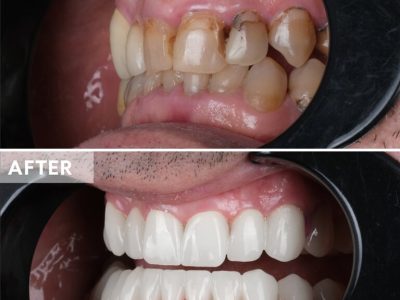Did you know that obsessive-compulsive disorder (OCD) is a mental illness? It causes different symptoms, like repeated and unwanted thoughts or sensations (obsessions) or the urge to do something over and over again (compulsions). Some people can have both obsessions and compulsions.
Obsessive-compulsive disorder causes a pattern of unwanted thoughts and fears, also known as obsessions. These obsessions lead you to do repetitive behaviors, also known as compulsions. These obsessions and compulsions interfere with daily activities and cause significant distress. You may try to ignore or stop your obsessions. Nonetheless, that only dramatically increases your distress and weight.
Ultimately, you feel driven to perform compulsive acts to try to ease your stress. Despite efforts to ignore or get rid of bothersome thoughts or urges, they keep coming back. In other words, they lead to more ritualistic behaviors. This is the vicious cycle of OCD. Obsessive-compulsive disorder often centers around certain themes.
For example, an excessive fear of getting contaminated by germs. To ease your contamination fears, you may compulsively wash your hands until they’re sore and chapped. If you have OCD, you may be ashamed and embarrassed about the condition. Luckily, treatment can be utterly effective.
What exactly is obsessive-compulsive disorder?
As we mentioned above, obsessive-compulsive disorder is a disorder in which people have recurring, unwanted thoughts, ideas, or sensations (obsessions). Sadly, these make them feel driven to do something repetitively (compulsions). The repetitive behaviors can significantly interfere with a person’s daily activities and social interactions. For instance, hand washing, checking on things, or cleaning.
Many people who don’t suffer from OCD have distressing thoughts or repetitive behaviors. However, these thoughts and behaviors usually don’t disrupt their daily life. For people with OCD, thoughts are persistent and behaviors are rigid. In fact, not performing the behaviors commonly causes great distress. Many people with OCD know or suspect their obsessions aren’t realistic.
But others may think they could be true (known as limited insight). Even if they know their obsessions aren’t realistic, people with OCD have difficulty disengaging from their obsessive thoughts. Most importantly, stopping the compulsive actions.
A diagnosis of OCD requires the presence of obsessions and/or compulsions that are very time-consuming. Believe it or not, people with OCD follow rituals for more than one hour a day.
This surely causes significant distress and impairs work or social functioning. OCD affects between two to three percent of people in the United States. Slightly more women than men are affected. OCD often begins in childhood, adolescence, or early adulthood. The average age symptoms appear is 19 years old.
OCD symptoms and types
Obsessive-compulsive disorder usually includes both obsessions and compulsions. Even so, it’s also possible to have only obsession symptoms or only compulsion symptoms. You may or may not realize that your obsessions and compulsions are excessive or unreasonable. Nevertheless, they take up a great deal of time. They interfere with your daily routine and social, school, or work functioning.
Although OCD comes in many forms, most cases fall into at least one of four general categories:
- Checking. For example, locks, alarm systems, ovens, or light switches. You may also think you have a medical condition like pregnancy or schizophrenia.
- Contamination. A fear of things that might be dirty or a compulsion to clean. In fact, mental contamination involves feeling like you’ve been treated like dirt.
- Symmetry and ordering. The need to have things lined up in a certain way
- Ruminations and intrusive thoughts. An obsession with a line of thought. Sadly, some of these thoughts might be violent or disturbing.
Obsessive symptoms
OCD obsessions are repeated, persistent, and unwanted thoughts. Additionally, urges or images that are intrusive and cause distress or anxiety. You might try to ignore them or get rid of them by performing a compulsive behavior or ritual. These obsessions typically intrude when you’re trying to think of or do other things.
Obsessions are often:
- Fear of contamination or dirt.
- Doubting and having a hard time tolerating uncertainty.
- Needing things orderly and symmetrical.
- Aggressive or horrific thoughts about losing control and harming yourself or others.
- Unwanted thoughts, including aggression or sexual or religious subjects.
Examples of obsession signs and symptoms include:
- Fear of being contaminated by touching objects others have touched.
- Doubts that you’ve locked the door or turned off the stove.
- Intense stress when objects aren’t in order or facing a certain way.
- Images of driving your car into a crowd of people.
- Thoughts about shouting obscenities or acting inappropriately in public.
- Unpleasant sexual images.
- Avoidance of situations that can trigger obsessions, such as shaking hands.
Compulsion symptoms
OCD compulsions are repetitive behaviors that you feel driven to perform. These repetitive behaviors or mental acts are meant to reduce anxiety related to your obsessions. Most importantly, they seek to prevent something bad from happening. However, engaging in the compulsions brings no pleasure and may offer only temporary relief from anxiety.
You may make up rules or rituals to follow that help control your anxiety when you’re having obsessive thoughts. These compulsions are excessive and often aren’t realistically related to the problem they’re intended to fix. Hence, as with obsessions, compulsions typically have themes, such as:
- Washing and cleaning.
- Checking.
- Counting.
- Orderliness.
- Following a strict routine.
- Demanding reassurance.
Check out these prime examples of compulsion signs and symptoms:
- Hand-washing until your skin becomes raw.
- Checking doors repeatedly to make sure they’re locked.
- Checking the stove repeatedly to make sure it’s off.
- Counting in certain patterns.
- Silently repeating a prayer, word, or phrase.
- Arranging your canned goods to face the same way.
Severity varies
OCD often begins in the teen or young adult years, though it can start in childhood. Symptoms often begin gradually and tend to vary in severity throughout life. In fact, the types of obsessions and compulsions you experience can also change over time. Symptoms generally worsen when you experience greater stress. OCD, which is usually considered a lifelong disorder, can have mild to moderate symptoms.
Similarly, it can be so severe and time-consuming that it becomes disabling. When does a sufferer truly have to see a doctor? There’s a huge difference between having OCD and being a perfectionist. For example, a person who requires flawless results or performance.
OCD thoughts aren’t simply excessive worries about real problems in your life or wanting to have things clean or arranged in a specific way. Are your obsessions and compulsions affecting your quality of life? Consider seeing your doctor or mental health professional. Surely a skilled professional can help.
Causes and risk factors
Believe it or not, the cause of obsessive-compulsive disorder isn’t fully understood. Some of the main theories include:
- Biology. OCD may be a result of changes in your body’s own natural chemistry or brain functions.
- Genetics. OCD may have a genetic component, though specific genes have yet to be identified.
- Learning. Obsessive fears and compulsive behaviors can be learned from watching family members or gradually learned over time.
Sadly, there are factors that may increase the risk of developing or triggering obsessive-compulsive disorder. They include:
- Family history. Having parents or other family members with the disorder can increase your risk of developing OCD.
- Stressful life events. If you’ve experienced traumatic or stressful events, your risk may increase. This reaction may, for some reason, trigger the intrusive thoughts, rituals, and emotional distress characteristic of OCD.
- Other mental health disorders. OCD may be related to other mental health disorders. For instance, anxiety disorders, depression, substance abuse, or tic disorders.
OCD diagnosis and treatment
When it comes to a diagnosis, your team of doctors may do a physical exam. They’ll do blood tests to make sure something else isn’t causing your symptoms. They’ll also to you about your feelings, thoughts, and habits. Although there’s no cure for OCD, you may manage how your symptoms affect your life in many ways. For example, through medicine, therapy, or a combination of treatments. Treatments include:
- Psychotherapy. Cognitive-behavioral therapy can help change your thinking patterns. In a form called exposure and response prevention, your doctor will put you in a situation designed to create anxiety or set off compulsions. You’ll then learn to lessen and stop your OCD thoughts or actions.
- Relaxation. Obviously, simple things in life can help with stressful OCD symptoms. For instance, meditation, yoga, and massages.
- Medication. Psychiatric drugs called selective serotonin reuptake inhibitors can help many people control obsessions and compulsions. Nevertheless, they might take two to four months to start working. Common ones include citalopram (Celexa), escitalopram (Lexapro), fluoxetine (Prozac), fluvoxamine, paroxetine (Paxil), and sertraline (Zoloft). If you still have symptoms, your doctor might give you antipsychotic drugs like aripiprazole (Abilify) or risperidone (Risperdal).
- Neuromodulation. In rare cases, therapy and medication don’t make enough of a difference. Thus, your doctor will tell you about devices that change the electrical activity in certain areas of your brain. One type, transcranial magnetic stimulation, is FDA-approved for OCD treatment. It uses magnetic fields to stimulate nerve cells. A more complicated procedure, deep brain stimulation, uses electrodes that are implanted in your head.
- TMS (transcranial magnetic stimulation). The TMS unit is a non-invasive device that’s held above the head to induce the magnetic field. In other words, it targets a specific part of the brain that regulates OCD symptoms.
OCD-related conditions
Other conditions are similar to OCD. They involve obsessions with things like:
- Your looks (body dysmorphic disorder).
- Collecting, arranging, or ordering things (hoarding disorder).
- Pulling out/eating your hair (trichotillomania).
- Picking at your skin (excoriation).
- Physical illness (hypochondriasis).
- Body odor or how you smell (olfactory reference syndrome).
Complications and prevention
As we mentioned above, many problems result from obsessive-compulsive disorder. They include:
- Excessive time spent engaging in ritualistic behaviors.
- Health issues such as contact dermatitis from frequent hand-washing.
- Difficulty attending work, school, or social activities.
- Troubled relationships.
- Overall poor quality of life.
- Suicidal thoughts and behaviors.
In short, there’s no sure way to prevent obsessive-compulsive disorders. However, getting treatment as soon as possible may help prevent OCD from worsening. It’ll also help prevent the compulsion from disrupting your activities and daily routine.
The Emotional Competence Framework in Children
The post What’s Obsessive-Compulsive Disorder? appeared first on Exploring your mind.



















Comments